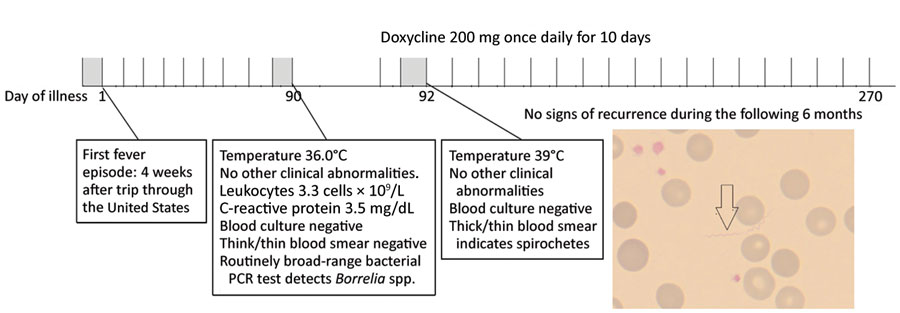Volume 26, Number 9—September 2020
Dispatch
Human Borrelia miyamotoi Infection, Austria
Figure 1

Figure 1. Timeline of the course of symptoms and treatment, including laboratory test results, for a patient with Borrelia miyamotoi infection (including Giemsa stain of thin blood smear on day 92), Austria. Arrows indicate spirochetes. Original magnification × 100.
Page created: July 14, 2020
Page updated: August 19, 2020
Page reviewed: August 19, 2020
The conclusions, findings, and opinions expressed by authors contributing to this journal do not necessarily reflect the official position of the U.S. Department of Health and Human Services, the Public Health Service, the Centers for Disease Control and Prevention, or the authors' affiliated institutions. Use of trade names is for identification only and does not imply endorsement by any of the groups named above.